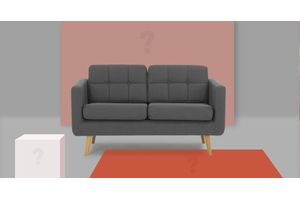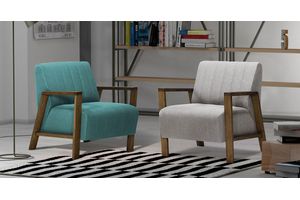
Retro vs. Modern Furniture: Finding the Right Balance for Your Home
When deciding on the interior design of our home, we encounter many dilemmas. One of the most important choices we can make is between the retro and modern styles. Both aesthetics have their unique features, capturing the spirit of their eras and bringing a different character to the space. However, the question often arises: can these two styles be combined to create a harmonious and attractive furniture composition in our interior? In this article, we will explore this fascinating issue and learn how to balance retro and modern furniture to create a unique atmosphere in our home.
Retro Furniture: A Journey into the Past
The retro style is a journey through time, taking us back to bygone years and epochs behind us. Retro furniture is characterized by distinctive designs and details that reflect a specific period in the history of design. This style often evokes feelings of nostalgia and warmth, reminding us of times gone by.
In retro furniture, we can see a variety of forms and shapes. Simple, geometric lines of the 1950s and 1960s, the elegance and opulence of the 1920s, or even rustic elements from previous centuries – each era brings something unique. Characteristic features of retro furniture include rich fabrics, often in intense colors and patterns, as well as the use of natural materials that add warmth and authenticity.
Two selected examples of retro furniture from the SLF24 offer perfectly capture the essence of this style. The Chester Chaise Lounge Sofa is a piece that transports us straight to the elegant atmosphere of the 1930s lounges. Bold stitching, soft upholstery, and a unique shape make it not only a seating piece but a true work of art. On the other hand, the Agon Armchair pays homage to the 1960s, presenting simplicity and geometric patterns that were so characteristic of that period. These pieces not only add charm to the space but also bring the spirit of past eras.

Modern Furniture: Minimalism and Innovation
Alongside the retro style, we also have the modern style, which focuses on functionality, minimalism, and an innovative approach to design. Modern furniture often features simple, clean lines combined with contemporary materials and technology. This style aims to simplify the form, eliminating unnecessary decorations and details.
Characteristic features of modern furniture also include comfortable shapes, ergonomic forms, and functionality. These are pieces that not only look aesthetically pleasing but also fulfill specific user needs. The introduction of modern materials such as metal, glass, or synthetic materials allows for the creation of innovative shapes and structures.
Two examples of modern furniture from the SLF24 lineup perfectly illustrate this approach. The Buzz Chair is an example of minimalist design that also captivates with its comfort. Its simple form and muted color palette create a coherent composition, and functional details make the armchair a perfect fit for the needs of the contemporary lifestyle. On the other hand, the Bondi 3 Seater Sofa is an excellent example of combining elegance and functionality. Minimalist lines, comfortable seating, and unique armrests create a piece that not only looks modern but also performs its role perfectly.
Finding Balance: Properly Blending Styles
Making a decision between retro and modern furniture can be challenging, but it doesn't mean we have to choose only one style. We can achieve harmony by combining these two diverse approaches in one interior. The key to success is finding the right balance between retro and modern furniture and skillfully integrating them into a coherent whole.
Acknowledge Your Preferences and Needs
The first step is to understand your preferences and needs. Are you more drawn to the charm of the past or are you fascinated by modernity? It's also worth considering the purposes of each room – whether it's meant to be a relaxation zone, a workspace, or a place to gather with friends.
Mixing Main and Accent Furniture in Both Styles
The key to effectively combining retro and modern furniture is to skillfully choose main and accent pieces in both styles. For example, you could opt for a retro-style sofa as the centerpiece of your living room and complement it with modern armchairs or coffee tables. Combining different types of furniture allows you to achieve an interesting visual effect.

Playing with Colors and Materials for Harmony
Color schemes and materials play a crucial role in balancing styles. You can select colors that bridge retro and modern elements, creating a cohesive whole. For example, choosing neutral colors for modern furniture and adding pops of intense colors from retro furniture can create an intriguing effect.
Practical Use of Space for Furniture Balance
In smaller spaces, practical use of space is particularly important. Placing retro and modern furniture strategically allows for an even distribution of styles throughout the room. It's also essential to maintain space between furniture to avoid a cluttered feeling.
Balancing between retro and modern furniture is a creative process that allows us to express our creativity and individuality. Using different inspirations and ideas will help us create a unique and harmonious interior. Ultimately, it's our vision and ideas that shape the space, reflecting our personality and lifestyle.


